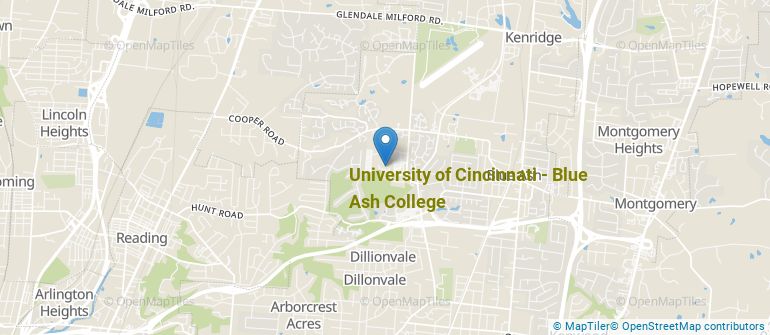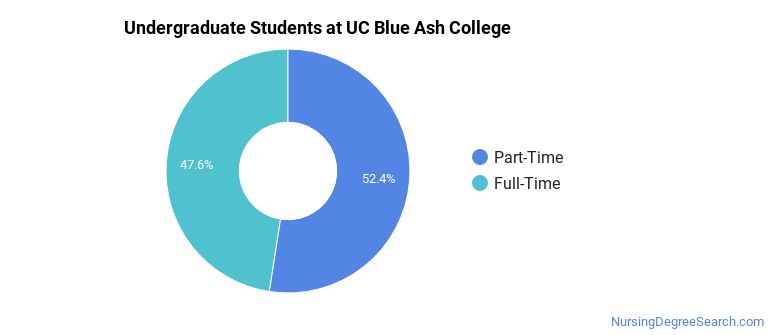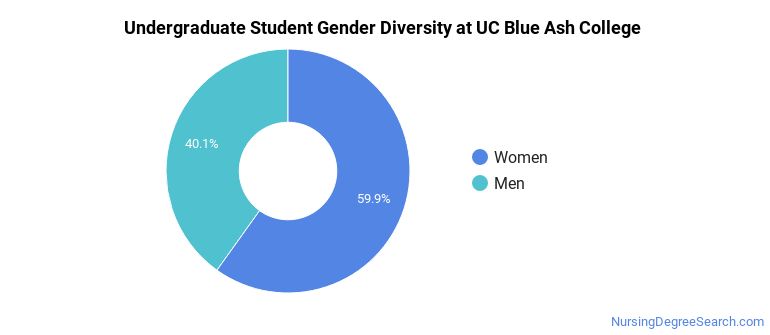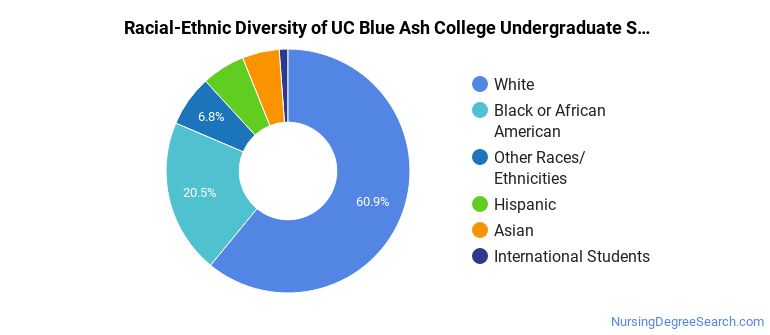University of Cincinnati - Blue Ash College Nursing Programs
Located in Blue Ash, Ohio, University of Cincinnati - Blue Ash College is a public institution. Blue Ash is a good match for students who enjoy the safety and convenience of the suburbs.
Where Is University of Cincinnati - Blue Ash College?

Contact details for UC Blue Ash College are given below.
| Contact Details | |
|---|---|
| Address: | 9555 Plainfield Rd, Blue Ash, OH 45236-1096 |
| Phone: | 513-745-5600 |
| Website: | www.ucblueash.edu |
How Do I Get Into UC Blue Ash College?
You can apply to UC Blue Ash College online at: www.ucblueash.edu/admissions/steps/apply-now.html
Can I Afford University of Cincinnati - Blue Ash College?
Student Loan Debt
Almost 66% of college students who graduated with the class of 2018 took out student loans, but that percentage varies from school to school. At UC Blue Ash College, approximately 42% of students took out student loans averaging $5,291 a year. That adds up to $21,164 over four years for those students.
University of Cincinnati - Blue Ash College Undergraduate Student Diversity

Gender Diversity
Of the 3,443 full-time undergraduates at UC Blue Ash College, 40% are male and 60% are female.

Racial-Ethnic Diversity
The racial-ethnic breakdown of University of Cincinnati - Blue Ash College students is as follows.

| Race/Ethnicity | Number of Grads |
|---|---|
| Asian | 169 |
| Black or African American | 705 |
| Hispanic or Latino | 198 |
| White | 2,098 |
| International Students | 40 |
| Other Races/Ethnicities | 233 |
Geographic Diversity
Ohio students aren't the only ones who study at University of Cincinnati - Blue Ash College. At this time, 9 states are represented by the student population at the school.
University of Cincinnati - Blue Ash College Nursing Concentrations
The table below shows the number of awards for each concentration.
| Major | Associate’s | TOTAL |
|---|---|---|
| Registered Nursing | 63 | 63 |
| TOTAL | 63 | 63 |
References
*The racial-ethnic minorities count is calculated by taking the total number of students and subtracting white students, international students, and students whose race/ethnicity was unknown. This number is then divided by the total number of students at the school to obtain the racial-ethnic minorities percentage.
More about our data sources and methodologies.
